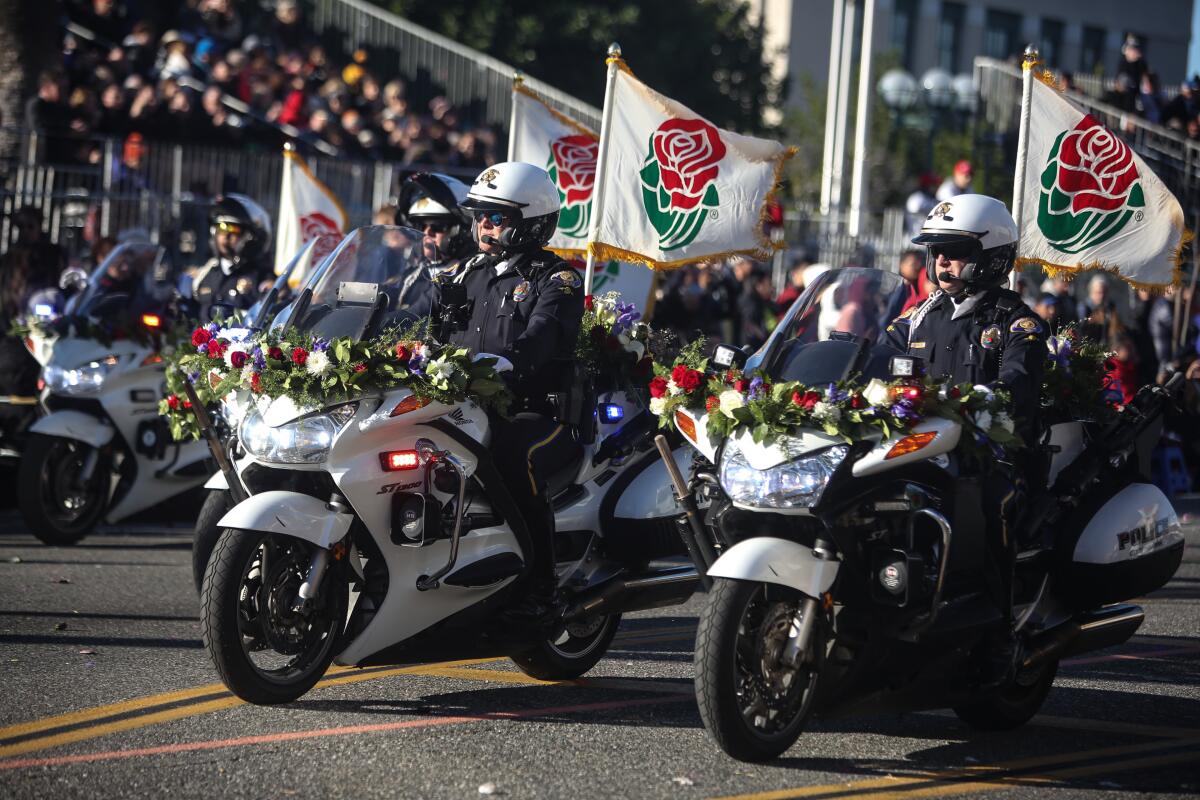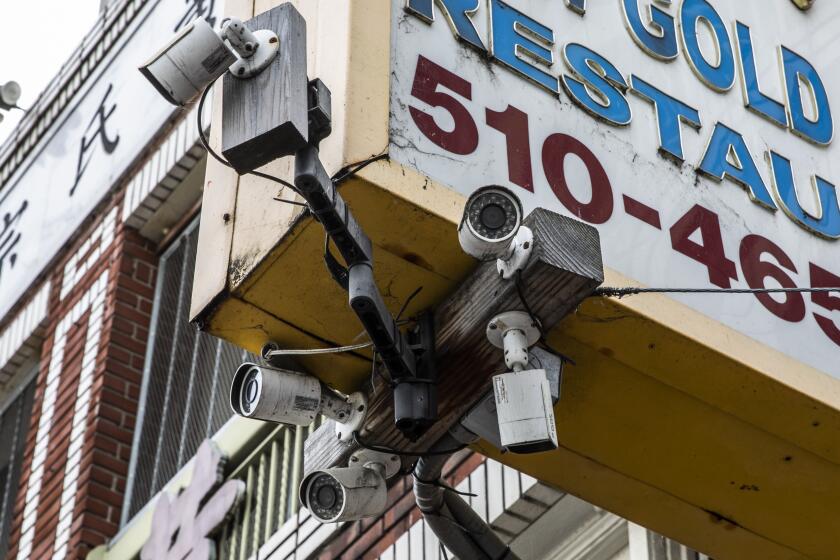Pasadena police consider body cameras that activate when officers draw handguns

The Pasadena Police Department is considering buying equipment that would automatically activate all nearby police body cameras when any officer draws a handgun from a holster.
The equipment could provide a new level of oversight to the Police Department, which counts more than 230 sworn and armed police officers within its ranks. If the purchase is approved by city officials, it would make Pasadena one of a handful of California police departments that have deployed the new technology on the streets.
The proposed $4.5-million purchase is expected to be considered by the Pasadena City Council during its April 29 meeting.
Although body-worn cameras are common throughout the nation’s police departments, most of the equipment requires police officers to turn on the cameras to record crucial incidents. The circumstances under which officers must manually switch on their cameras are often dictated by department policy.
Gov. Newsom announced Friday that Oakland will install about 480 surveillance cameras around the city and on freeways to help combat crime.
The new equipment being considered by Pasadena police, however, would automatically activate all nearby cameras to record during specific circumstances.
Sensors located in firearms and holsters would automatically switch on body-worn camera recorders when a firearm is removed from its holster. The sensor would activate the camera of the officer who drew their weapon and all body-worn cameras within 20 feet, officials said.
Although recordings from body-worn police cameras have in many highly publicized cases raised questions about police-involved shootings, law enforcement experts say the cameras have also provided evidence that shows police acted lawfully when pulling a gun.
Orange will install license plate readers and video cameras throughout the city to catch criminals traveling through the area and prevent future crime, city officials say.
Pasadena police have already conducted a three-month pilot test of the technology with 12 officers, Karen Peterson, executive administrator for the Police Department, said Thursday during a Police Oversight Commission meeting.
The staff, she said, provided positive reviews of the equipment.
“Some of the comments that came back was they didn’t even notice it was part of their gear,” she said at the meeting.
Pasadena police have used body cameras since 2016.
The new equipment would be part of a five-year contract the Police Department is considering with Axon Enterprise, a company that provides equipment and technology to police departments across the country, including body-worn cameras.
The Police Department is also looking to update its current body-worn cameras as part of the contract, with new cameras that record better images, have a wider field of view and can work with a system that can livestream real-time images from the field.
“It’s a better way of communicating with what is happening on the scene,” Peterson said.
The department has 306 of its 316 body cameras deployed to officers.
The new equipment, known as Axon Signal Sidearm, would be deployed to 235 officers, Peterson said.
Police in other California cities, including Huntington Beach, Anaheim and Glendale, have already begun using the same equipment, she said.
Sacramento police also began using the same equipment in 2022.
The Murrieta Police Department announced it would swap in yellow bricks to obscure suspects’ identities on social media. Critics say: Not so clever.
The contract being considered would cost the city approximately $4.5 million, said Lisa Derderian, spokesperson for the city. The contract would include the new holster equipment, the upgraded body cameras and a new software program that would provide the department more detailed analytics and metrics for body-worn cameras, Tasers, calls for service and other information.
The Pasadena Police Department is expected to provide the city’s Public Safety Committee a report on the plan before it is considered for approval by the City Council.
More to Read
Sign up for Essential California
The most important California stories and recommendations in your inbox every morning.
You may occasionally receive promotional content from the Los Angeles Times.














